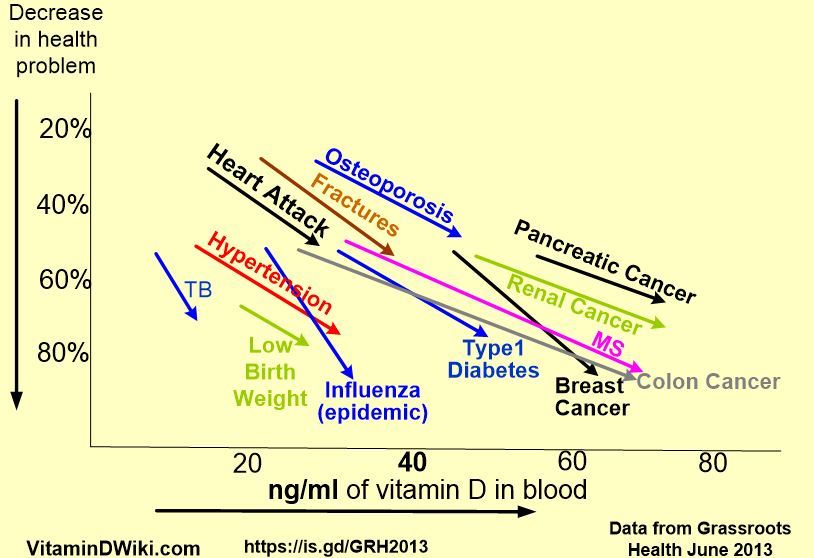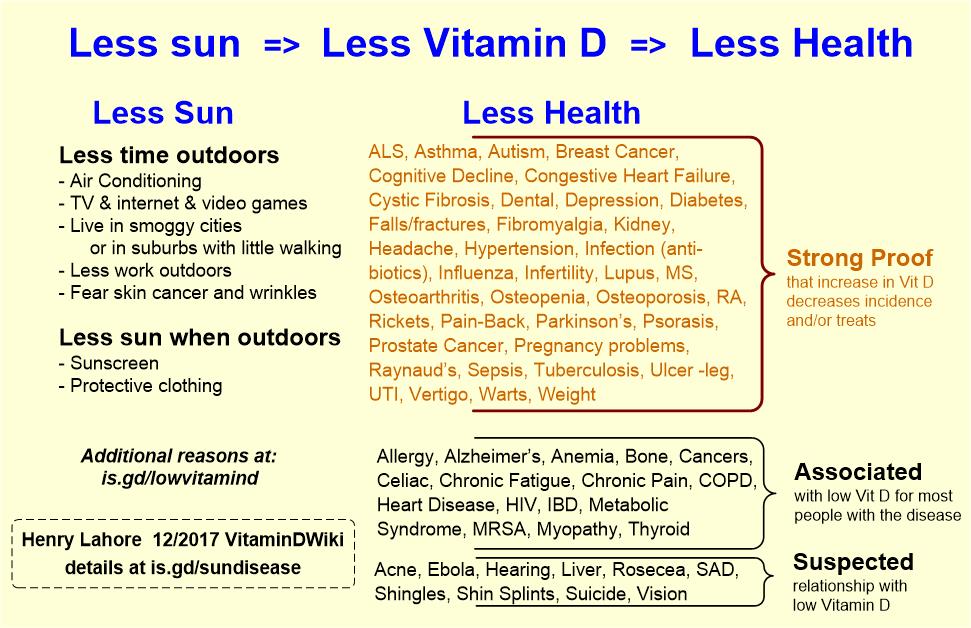Vitamin D recommendations should reduce Rickets (but not much else)
European Food Safety Authority March 2016 posted draft for comment:
Scientific Opinion on Dietary Reference Values for vitamin D
📄 Download the PDF from Vitamin D Life
EFSA, proposes:
20 ng level and 600 IU intake (with ZERO for age 0 to 6 months)
20 nanograms is enough to deal with Rickets
but 40+ nanograms is needed for other BONE and BODY health
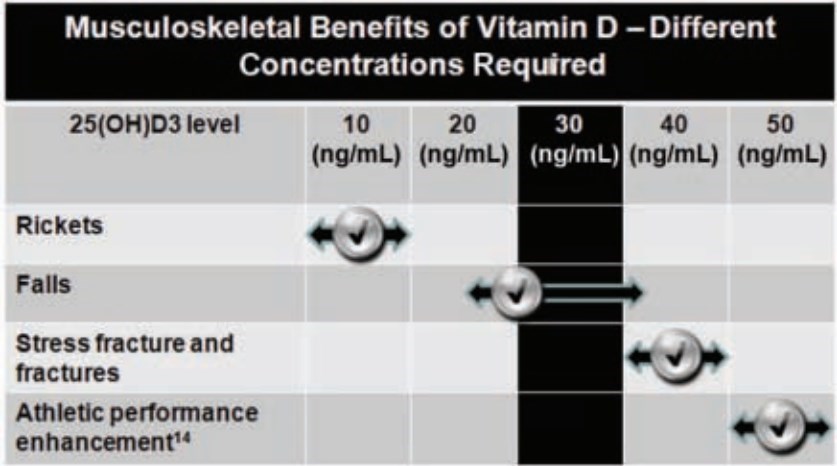
Is 50 ng of vitamin D too high, just right, or not enough has the following summary chart
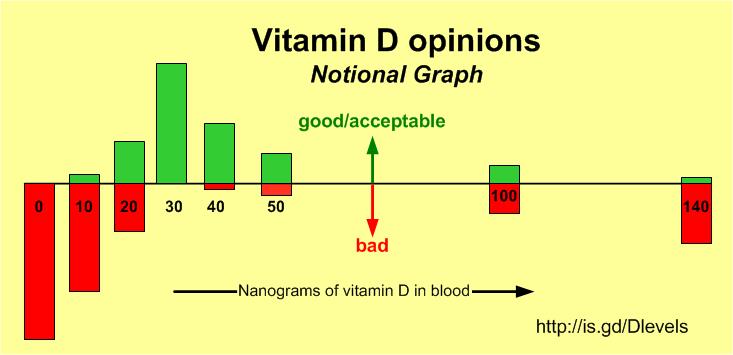
Virtually all studes define 30 ng as sufficient
Many experts say 40 ng is good
Some experts say 50 ng is much better for disease prevention
Some experts say 50 ng is too much
- But some experts feel 50 ng is not enough to TREAT diseases
EFSA summarizes some current recomendations
ADULT
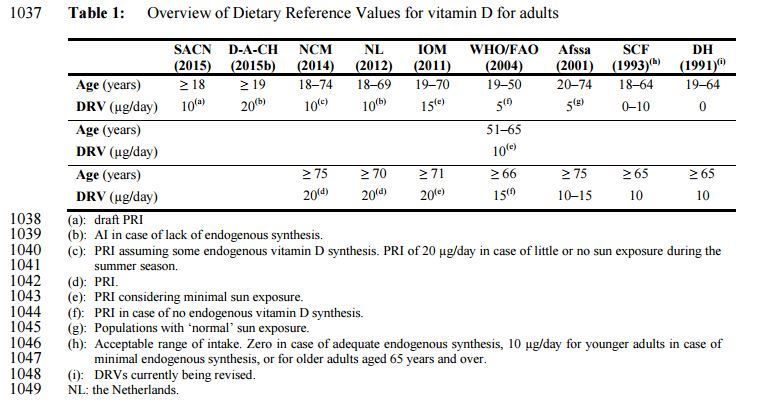
CHILD
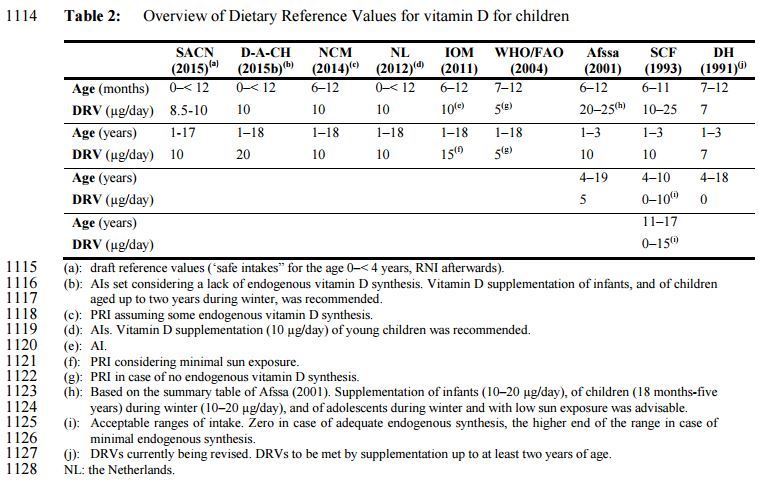
PREGNANT/LACTATING

| SACN | UK | Scientific Advisory Committee on Nutrition |
| D-A-CH | Germany | Deutschland- Austria- Confoederatio Helvetica |
| NCM | Nordic Countries | Nordic Council of Ministers |
| NL | Netherlands | |
| IOM | U.S. | Institute of Medicine of the National Academy of Sciences |
| WHO | Globe | World Health Organization |
| Afssa | France | Agence française de sécurité sanitaire des aliments |
| SCF | Europe | Scientific Committee for Food |
| DH | UK | UK Department of Health |
Virtually all recommendations fail to notice
- Some groups of people need substantially need more vitamin D
- Obese/overweight
- Poor health - especially poor gut, poor liver, poor kidney
- other forms of vitamin D oten work well
- Live far from equator
- Pregnant (need to eat for more than one)
- Seniors German seniors 10 pct less than 7ng, 92 pct less than 30 ng vitamin D – Jan 2012
More vitamin D is needed for body health than for bone health
Higher percentage of people are Vitamin D deficient every year
- Yet most recomendations give equal weight to studies from the past 50 years
- 3X more kids were vitamin D deficient when entering UK hospitals than 4 years before – Oct 2014
- Why are so many Victorian killer illnesses making a comeback - Nov 2012
Falls in Vitamin D Life
- EFSA failed to notice that they recommended 800 IUs in 2014
Overview Fractures and Falls and Vitamin D 800 IU is the very bare minimum amount
Yet again, 800 IU of vitamin D was found to be barely enough to help bones – Lancet Oct 2013
Bone fractures reduced by a minimum of 800 IU vitamin D and Calcium – meta-meta-analysis March 2014
Half of seniors got NO response at all from 1600 IU of vitamin D
Europe in Vitamin D Life
Death due to low vitamin D in Vitamin D Life
- Let 1000 die from vitamin D deficiency rather than incur 1 lawsuit
- Conclusions from looking at A look at inner workings of committee looking at vitamin D for UK - Dec 2012
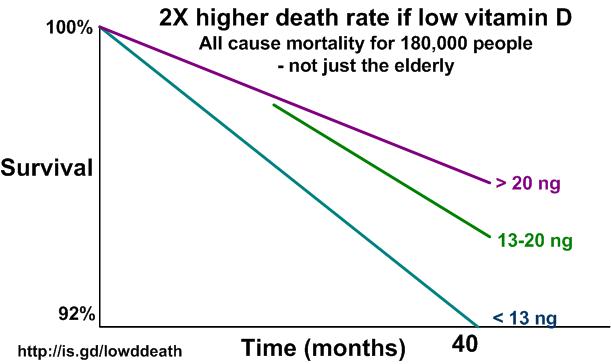
- click on chart for details
- Should people at high risk for vitamin D deficiency wait 5 years -Feb 2013
- They may be trying for a risk/reward ratio of about 1 in 1,000
- Note: The word Death occurs only twice in EFSA document
- Dr. Grant on vitamin D and mortality in Vitamin D Life
Pregnancy and Vitamin D in Vitamin D Life
Healthy pregnancies need lots of vitamin D has the following summary
{include}
Bones problems in Vitamin D Life
- Turkey gave 400 IU vitamin D to all infants and reduced Rickets by 60X - 2011
- yes, 400 IU does reduce rickets, but not much else
Rickets can be suspected below 36 ng of vitamin D – Oct 2012 - not just 20 nanograms
More calcium in bones in those teenage girls getting 2,000 IUs daily – RCT Jan 2016
See also Vitamin D Life
Proof that Vitamin D Works 68 health problems PROVEN to be helped (Feb 2016)
More than half of the top richest US lobbys are Health related all lobbyists are opposed to size reductions
- American Medical Association, American Hospital Association, Big Pharma are 3 of the 6 biggest spending lobbiests in the US
1600 IU vitamin D was enough to get all (white, non-obese) elderly to 20 ng – RCT Dec 2012
Huge decrease in many health problems with more than 20 ng of vitamin D - click on chart for details
- Recommendations around the world - click on chart for details

- Note this is EFSA as of 2010. EFSA is proposing in 2016 to reduce the upper limit from 4,000 IU to 2000 IU
- Less sun ==> Less Vitamin D ==> Less Health - click on chart for details

